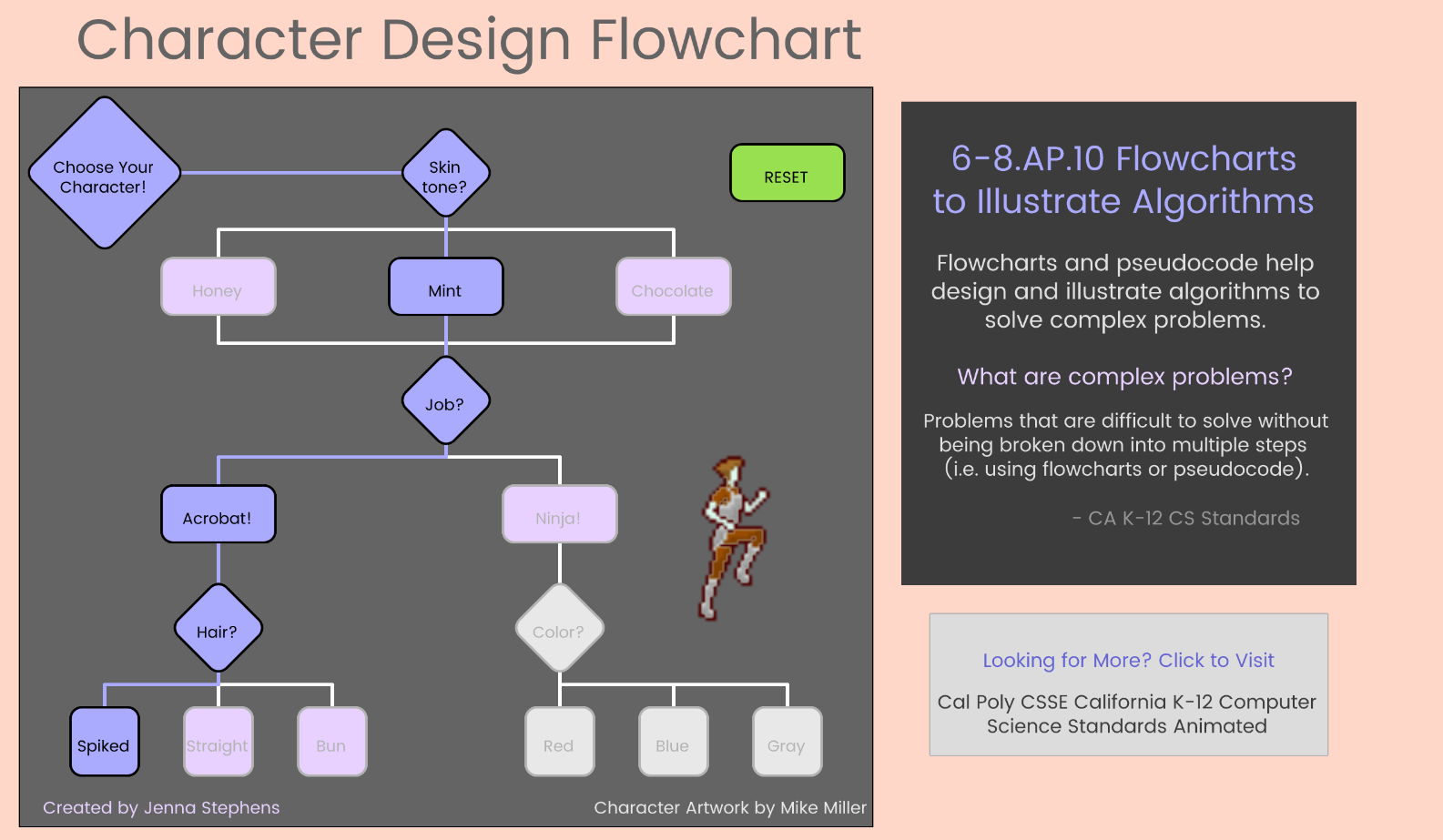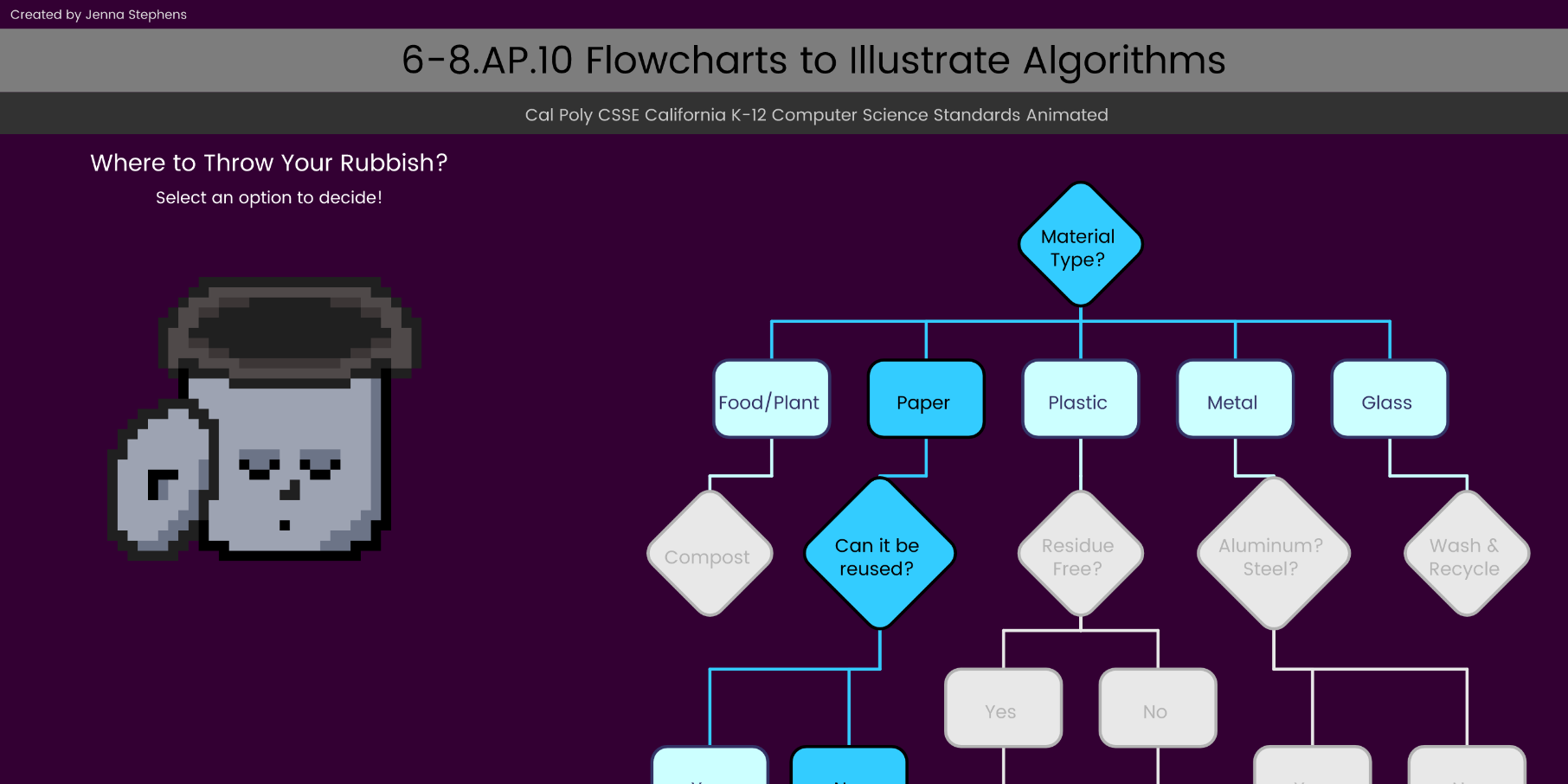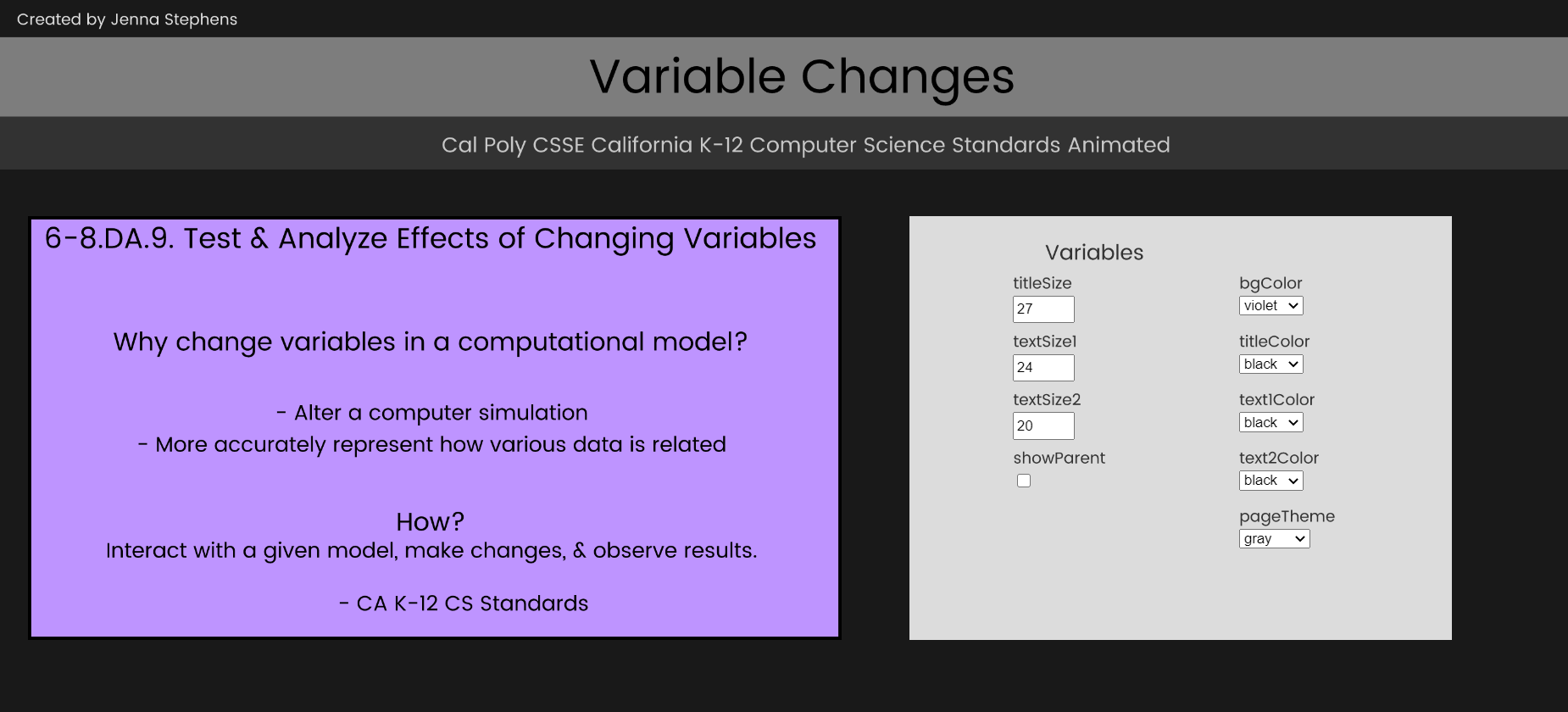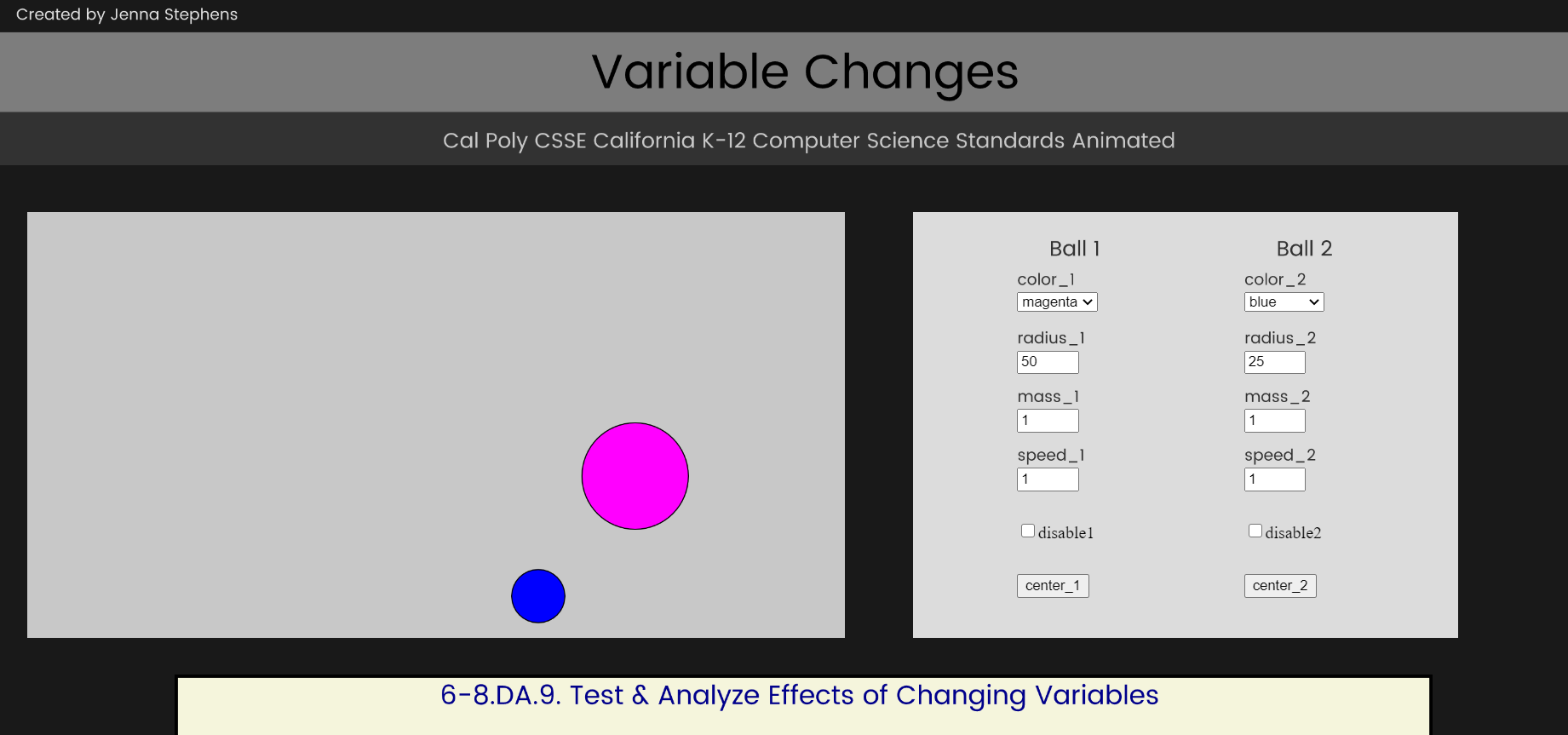K-12 Visual CS Standards
As technology becomes more entwined with daily life, the need for K-12 students to be computationally literate increases. Computer science is a new and rapidly changing field, providing opportunities for students to learn problem solving skills, creativity, persistence, and collaboration. With this goal in mind, I created several iterations of interactive visualizations to assist teachers in understanding the official California K-12 Computer Science Standards.
This project was overseen by Dr. Zoë Wood.
Algorithms via Flowcharts
Standard Identifier: 6-8.AP.10 (Grade Range 6-8, Algorithms & Programming)
Standard:
Use flowcharts and/or pseudocode to design and illustrate algorithms that solve complex problems.
Descriptive Statement:
Complex problems are problems that would be difficult for students to solve without breaking them down into multiple steps. Flowcharts and pseudocode are used to design and illustrate the breakdown of steps in an algorithm. Students design and illustrate algorithms using pseudocode and/or flowcharts that organize and sequence the breakdown of steps for solving complex problems.
For example, students might use a flowchart to illustrate an algorithm that produces a recommendation for purchasing sneakers based on inputs such as size, colors, brand, comfort, and cost.
Alternatively, students could write pseudocode to express an algorithm for suggesting their outfit for the day, based on inputs such as the weather, color preferences, and day of the week.
Character Design Flowchart (First Design)
Recycle Logic Flowchart (Second Design)
Variable Changes
Standard Identifier: 6-8.DA.9 (Grade Ranges 6-8, Data & Analysis)
Standard:
Test and analyze the effects of changing variables while using computational models.
Descriptive Statement
Variables within a computational model may be changed, in order to alter a computer simulation or to more accurately represent how various data is related. Students interact with a given model, make changes to identified model variables, and observe and reflect upon the results.
For example, students could test a program that makes a robot move on a track by making changes to variables (e.g., height and angle of track, size and mass of the robot) and discussing how these changes affect how far the robot travels. (CA NGSS: MS-PS2-2)
Alternatively, students could test a game simulation and change variables (e.g., skill of simulated players, nature of opening moves) and analyze how these changes affect who wins the game. (CA NGSS: MS-ETS1-3)
Additionally, students could modify a model for predicting the likely color of the next pick from a bag of colored candy and analyze the effects of changing variables representing the common color ratios in a typical bag of candy. (CA CCSS for Mathematics 7.SP.7, 8.SP.4)



